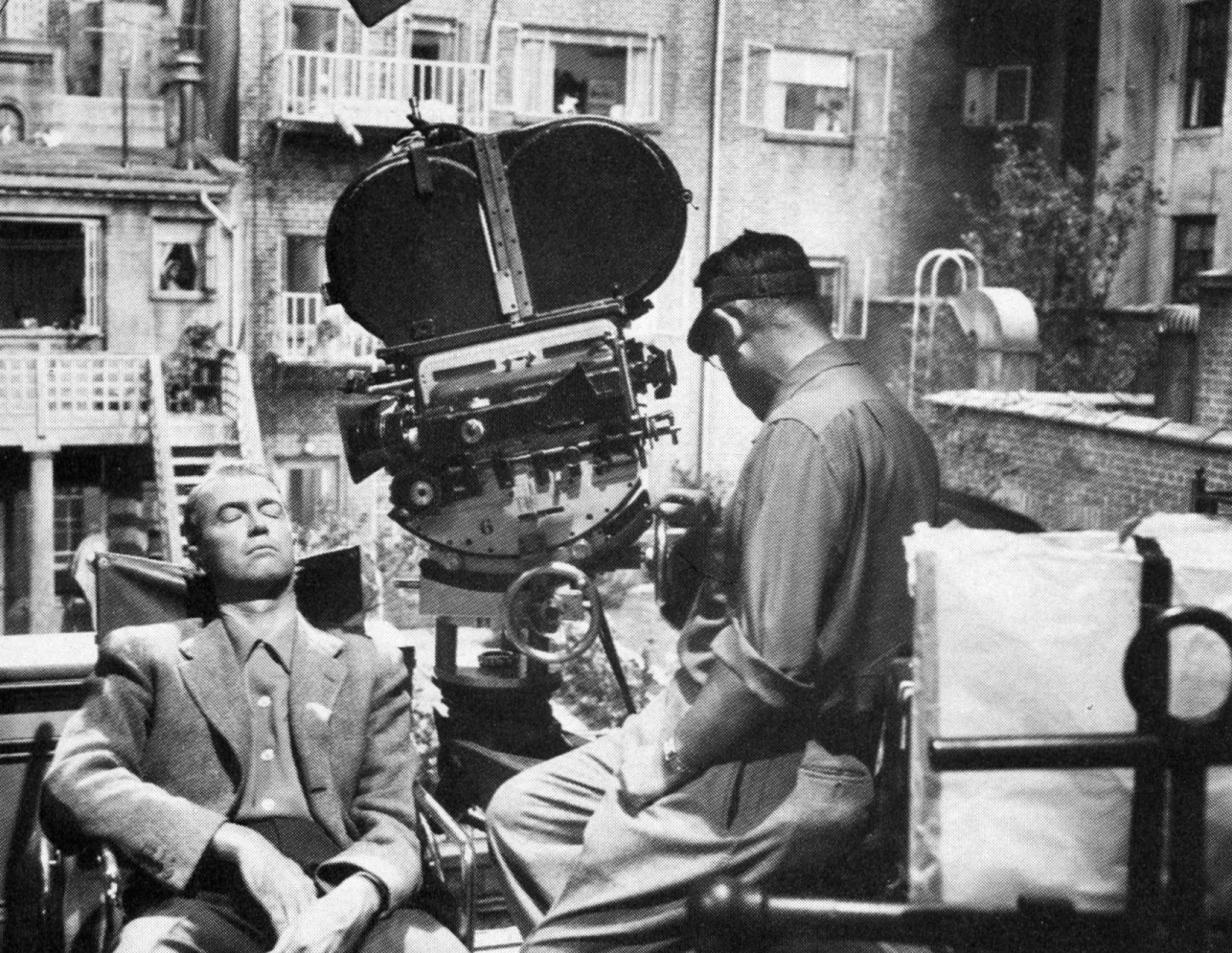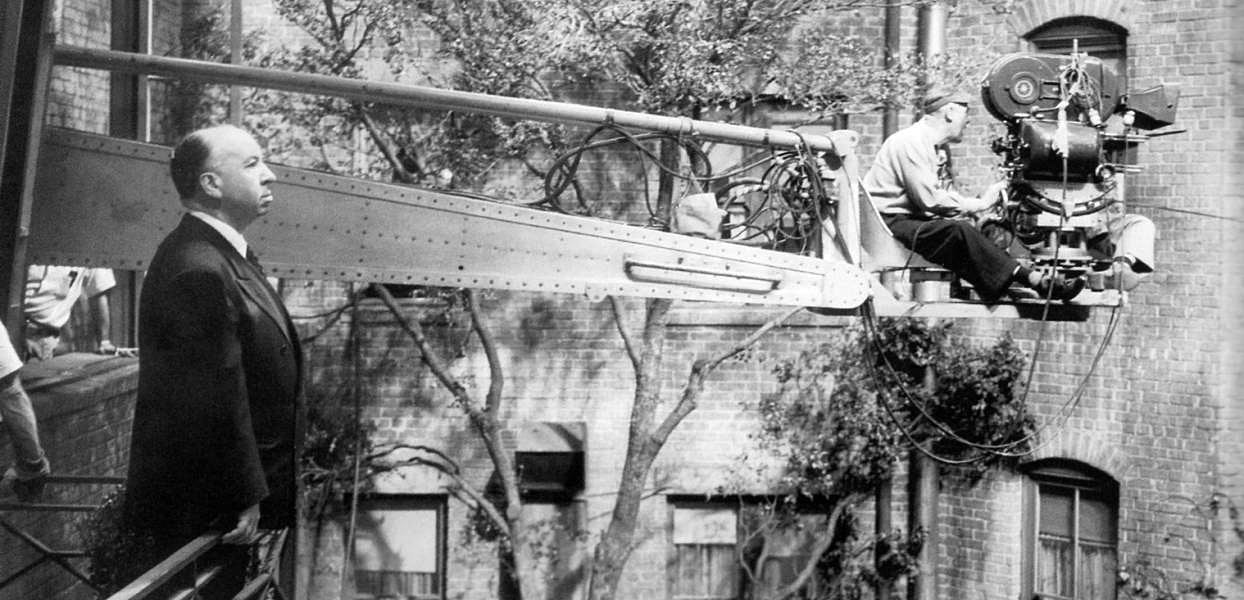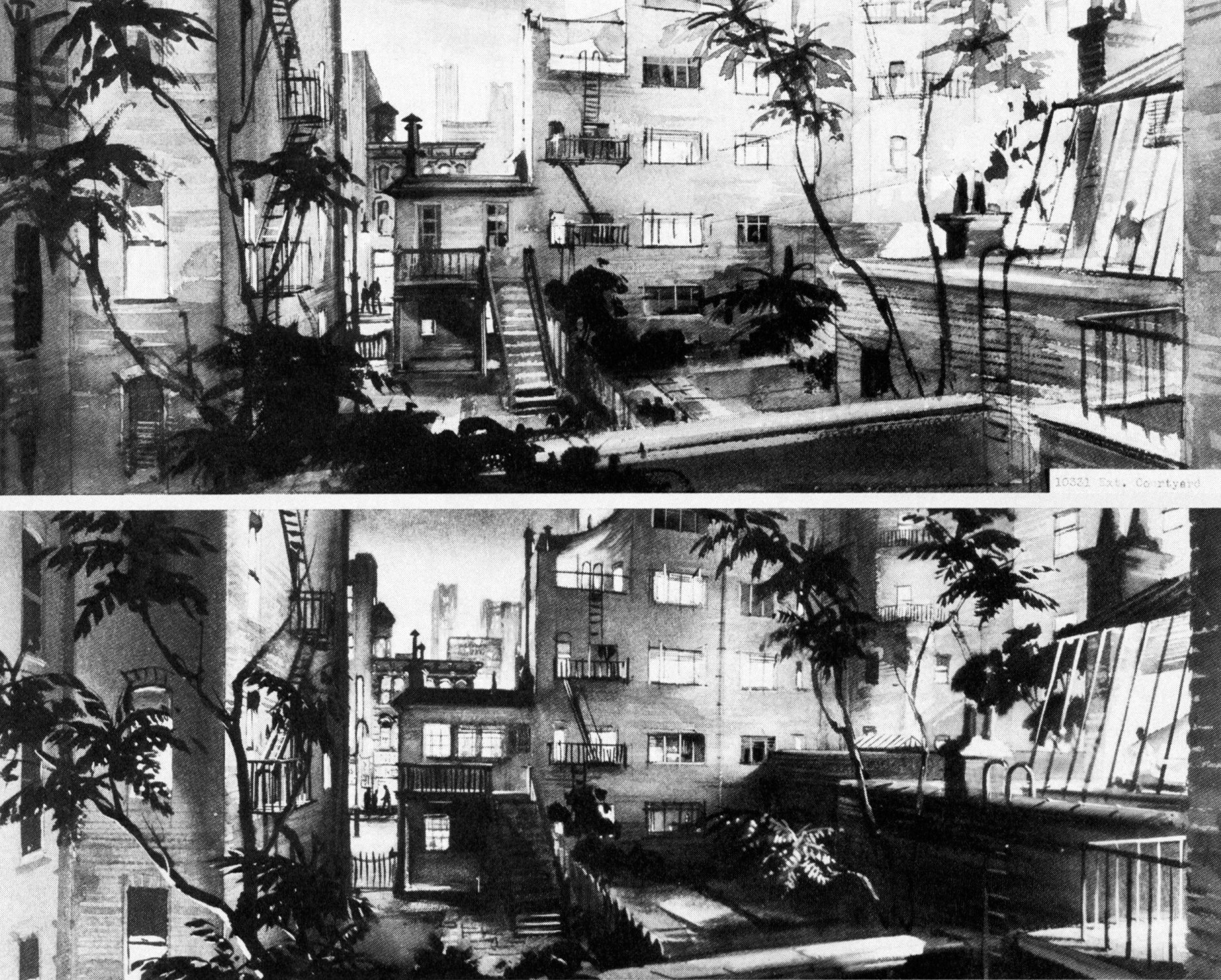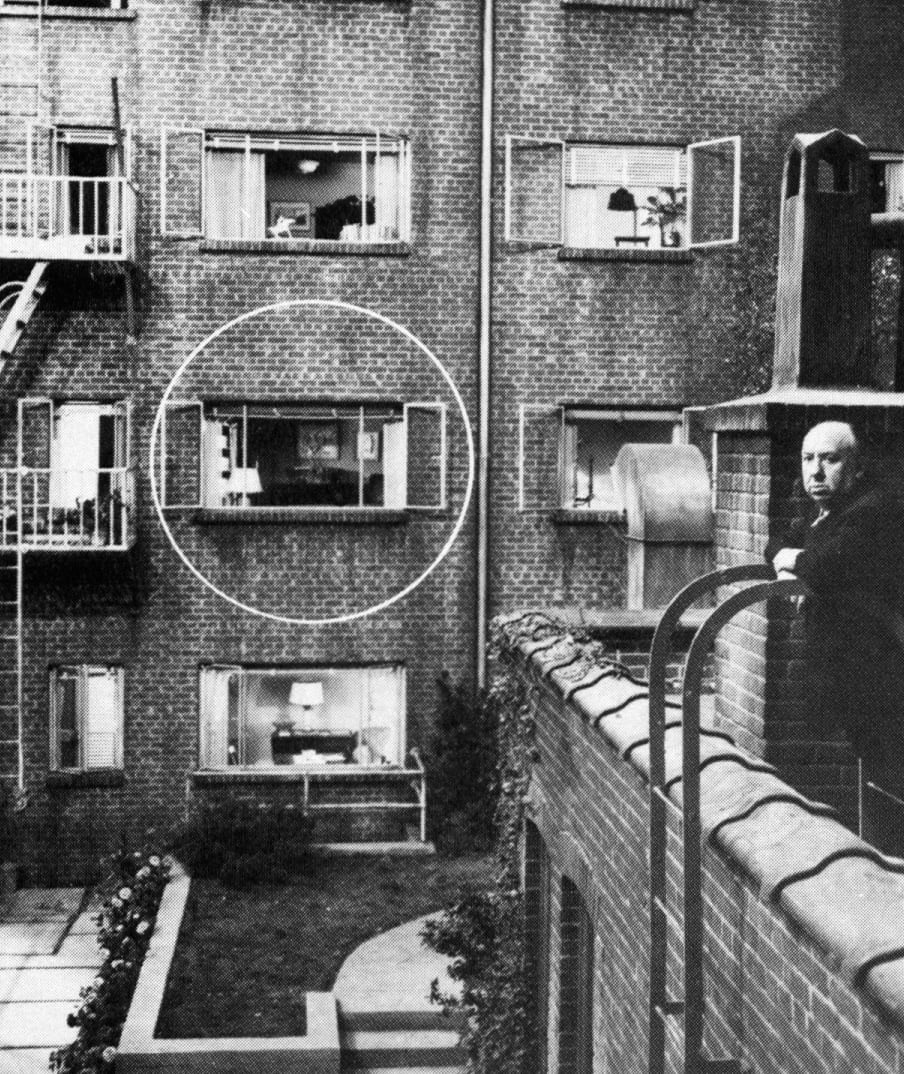
Photojournalist L.B. "Jeff" Jefferies is confined to his home in Greenwich Village. To pass the time, he spies on his neighbours with a telescopic lens and makes stories to go with their lives. The businessman Thorwald, in particular, intrigues him. Jeff becomes convinced that Thorwald murdered his wife and starts an investigation.
EN
“In the summer of 1953, Lew Wasserman, then Hitchcock's agent at MCA, arranged a deal with Paramount Pictures for the director to make a total of nine films (as it turned out, he only made six). The unusual contract called for the rights of five of these films to revert to Hitchcock eight years after their initial release. Rear Window was the first film that the director made under the Paramount contract and was one of those to which he would even actually own the rights, the others being The Trouble With Harry, The Man Who Knew Too Much (Hitchcock's 1956 remake of his 1934 British production), Vertigo, and Psycho. Hitchcock had been planning Rear Window during the filming of Dial 'M' For Murder at Warner Brothers. He had acquired the film rights to a 1942 short story by the mystery author Cornell Woolrich under the pseudonym William Irish. The story concerned an invalid confined to his room who spies on his neighbors and witnesses a murder. Eventually, the killer attempts to shoot the invalid from across the yard. However, the invalid manages to protect himself at the last minute by grabbing a bust of Beethoven and using it as a shield.
At the suggestion of his agents at MCA, Hitchcock hired a scriptwriter in his mid-30's named John Michael Hayes to write the treatment and script. Hayes, who received a fee of $15,000 for his services on the film, had a background of comedy and suspense writing for radio, and he turned out to be a perfect complement to Hitchcock with his ability to provide strong, credible characterization and witty, sophisticated dialogue. Hayes would subsequently be scriptwriter for Hitchcock's next three pictures – To Catch A Thief, The Trouble With Harry, and The Man Who Knew Too Much. Hayes' first task, which he apparently undertook with great skill, was to draft the treatment for Rear Window. It was on the basis of this treatment alone that James Stewart accepted the picture's starring role and agreed to forego a salary and receive instead a percentage of the film's profit.”
David Atkinson1
“The remote-control suspense scenes in Rear Window are Hitchcock at his most diabolical, creating dangerous situations and then letting Lisa and Stella linger in them through Jeff's carelessness or inaction. He stays in his wheelchair. They venture out into danger – Kelly even entering the apartment of the suspected wife killer. He watches. We see danger approaching. We, and he, cannot move, cannot sound the alarm. This level of danger and suspense is so far elevated above the cheap thrills of the modern slasher films that Rear Window, intended as entertainment in 1954, is now revealed as art.
Hitchcock long ago explained the difference between surprise and suspense. A bomb under a table goes off, and that's surprise. We know the bomb is under the table but not when it will go off, and that's suspense. Modern slasher films depend on danger that leaps unexpectedly out of the shadows. Surprise. And surprise that quickly dissipates, giving us a momentary rush but not satisfaction. Rear Window lovingly invests in suspense all through the film, banking it in our memory, so that when the final payoff arrives, the whole film has been the thriller equivalent of foreplay.”
Roger Ebert2
“André Bazin: While traditional criticism often reproaches you for brilliant but gratuitous formalism, several young French critics, on the contrary, profess a nearly universal admiration for your work and discover, beyond the detective story, a constant and profound message. What do you think about that?
Alfred Hitchcock: I am interested not so much in the stories I tell as in the means of telling them.
There followed a long account of Rear Window in terms of the technical improvisations that gave the film its originality. The film takes us, once more, into the realm of the detective story. The investigation is conducted in this instance by a convalescing magazine photographer, obliged to stay in his room because his leg is in a cast. He is also to discover a crime and identify the criminal solely by observing the comings and goings through the windows of the apartment building across the courtyard. During the entire film the camera remains in the journalist's room and sees only what he can physically see, either with the naked eye or with the aid of binoculars, which in any event allows for the use of different lenses. Telescopic lenses were ultimately required to keep the action in some sort of meaningful dramatic focus. The construction of the set posed equally complicated problems in order to permit the protagonist to observe as much as possible of his neighbor's actions without falsifying the architecture of an American city. Hitchcock himself insisted that half the film's action should be silent because the journalist cannot be expected to hear his neighbors at the distance he sees them. Thus the director had to resort to the guile of "pure cinema" which he adored. In general, dialogue is a nuisance to him because it restricts cinematographic expression, and he reproaches several of his films for this restriction.”
André Bazin3
- 1David Atkinson, "Hitchcock's Techniques Tell Rear Window Story," American Cinematographer, 5 July 2023.
- 2Roger Ebert, "Rear Window," rogerebert.com, 20 February 2000.
- 3André Bazin, "Hitchcock contre Hitchcock," Cahiers du Cinéma 7, nr. 39, 1 October 1954, 25.





